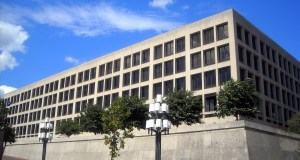Technology Modernization Fund support awarded to 7 new agency IT projects

The Technology Modernization Fund Board on Thursday announced seven new projects in its first round of awards for agency IT modernization since the fund received a $1 billion infusion as part of the American Rescue Plan.
The Office of Personnel Management, General Services Administration and the departments of Homeland Security and Education will receive support for new proposals through the distribution, which in total hands out $311 million to agencies for projects largely focused on addressing cybersecurity, data privacy concerns and the move to zero trust. The board did not reveal the repayment terms for each project.
It is the seventh funding round since the TMF was established and responds directly to the Biden administration’s cybersecurity executive order, which mandated federal agencies to make rapid improvements in digital security.
OPM will receive $9.9 million in support for a zero-trust networking project, which is focused on protecting the privacy of two million civilian federal employees whose data is housed at the agency.
GSA has received a total of $231.4 million for three separate projects. The agency has been given $29.8 million to improve its zero-trust architecture, and $187.1 million to improve digital security at federal government authentication service Login.gov. It will also receive $14.5 million to support the rollout of interagency collaboration site Max.gov.
DHS will receive $50 million in support for a technology integration program intended to “more efficiently, effectively, and humanely process noncitizens encountered at our Southwest Border.”
The Department of Education has been awarded $20 million to assist with the adoption of zero-trust architecture, which the department says will help to protect the data of over 100 million students and borrowers that it supports.
The TMF board has also selected one classified project, for which no further funding details were available.
Commenting on the awards, Federal CIO Clare Martorana said: “The $1 billion for the Technology Modernization Fund was provided in the American Rescue Plan for essential emergency relief, and is a vital part of the administration’s response to the COVID-19 pandemic and the significant cybersecurity incidents impacting federal operations.”
“The administration is maximizing the flexibility of the TMF to modernize high-priority systems, elevate the foundational security of federal agencies, accelerate the growth of public-facing digital services, and scale cross-government collaboration and shared services. These first ARP awards represent a set of strategic investments to improve technology at scale across all of these areas,” she added.
The TMF in March received $1 billion through the American Rescue Act — the largest injection of funds since it was established in 2017. The additional infusion was intended to boost support for projects where service upgrades could be shared across agencies, that address immediate security gaps, or would improve the public’s ability to access government services.

After receiving the additional $1 billion, the TMF board introduced a prioritization process for funding certain projects and introduced a new degree of repayment flexibility.
The TMF has historically operated under a full repayment model, meaning that agencies are expected to adhere to a repayment plan, where projects are expected to yield financial savings that the agencies pay back within five years. However, the TMF board is now able to consider projects where partial repayment or minimal repayment is likely, based on assessments of the scope of projects.
Funding for the latest project awards will be distributed incrementally and will be tied to performance targets and delivery milestones. The selected projects will be reviewed quarterly by the TMF board to ensure they are on schedule and milestones are met.
Federal Chief Information Security Officer Chris DeRusha noted that the Board and GSA, which operates the TMF program management office, would capture lessons learned from the latest projects awards and make adjustments along the way to ensure their success.
TMF projects are proposed in a two-phase process, and agencies in the second step – the full project proposal – are expected to provide detailed financial information, and if necessary, make the argument why repayment flexibility should be extended.
In a Senate hearing earlier this week, Martorana revealed that since the $1 billion emergency funding in March, the TMF board has received proposals from 48 different agencies or agency components, totaling more than $2.3 billion in requests.
Prior to the additional $1 billion injection earlier this year, the TMF in total had received $175 million in funding. The fund was created by the Modernizing Government Technology Act, signed by then-President Donald Trump.
Editor’s note: This story was updated to include a per-project breakdown of new funding awards.






